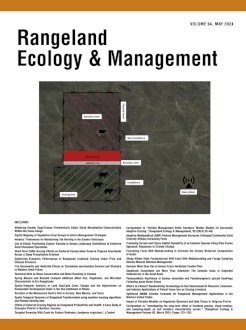Plant communities in a stable, long-term state with high sagebrush cover and low desirable perennial herbaceous cover and/or relatively high invasive annual cover are widespread across the Great Basin and distinct from areas affected by wildfire. Restoring these areas, collectively called “degraded sagebrush understories,” and preventing future degradation are management challenges that require maintaining desirable levels of sagebrush cover while simultaneously increasing understory perennial abundance and diversity. Defining degradation based on a firm grasp of current and potential vegetation composition is a fundamental aspect of setting restoration goals and selecting methods. Assigning degraded status to any given site is also a considerable challenge in many sagebrush landscapes due to widespread (and long-standing) lack of intact herbaceous plant communities in some landscapes, as well as high interannual variation in herbaceous community composition (particularly cover). In this manuscript, we provide a workflow for defining degraded understories and present a framework for identifying restoration approaches emphasizing the pathways (causes) of degradation in this system, such as historical cultivation, inappropriate grazing, invasive species, and drought, as well as the size and extent of degraded areas. We also describe the relative paucity of well-documented successful restoration approaches for degraded understories, particularly for one-time restoration treatments. This lack of success may be due to lack of propagules, potential competition from sagebrush, invasive species, and/or altered soil conditions. Multiple restoration treatments in specific sequences and/or years may increase success; however, the effectiveness of these techniques is uncertain due to infrequent implementation and rigorous evaluation across a range of environmental conditions. Due to the extent of degraded understories in Great Basin sagebrush ecosystems, meeting biome-level conservation goals will likely require additional research to characterize the types and development pathways of the degraded understories, spatiotemporal recovery or ongoing degradation patterns, and targeted restoration techniques.
How to translate text using browser tools
17 May 2024
Sagebrush Ecosystems are More Than Artemisia: the Complex Issue of Degraded Understories in the Great Basin
Stella M. Copeland,
Kirk W. Davies,
Chad S. Boyd
ACCESS THE FULL ARTICLE

Rangeland Ecology and Management
Vol. 94 • No. 1
May 2024
Vol. 94 • No. 1
May 2024
disturbance
Invasive annual grasses
plant communities
restoration
woody removal




